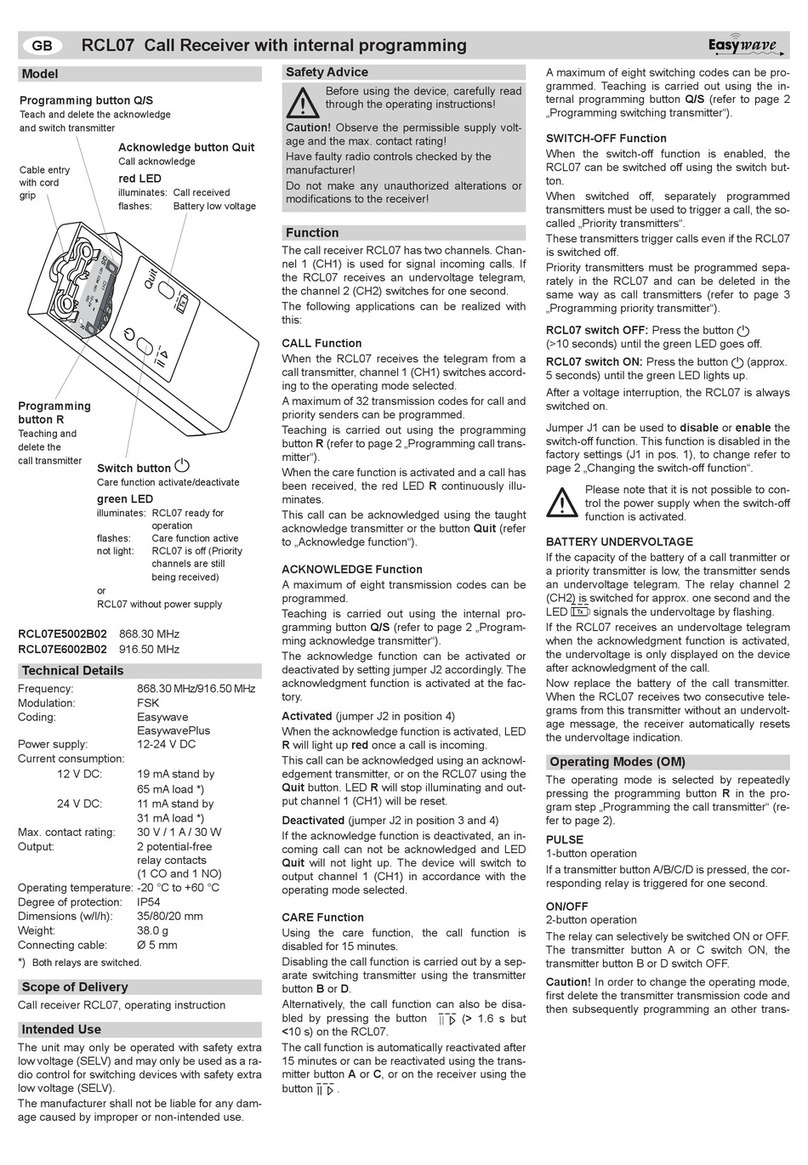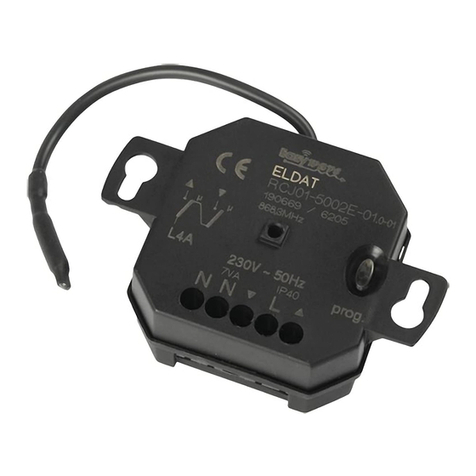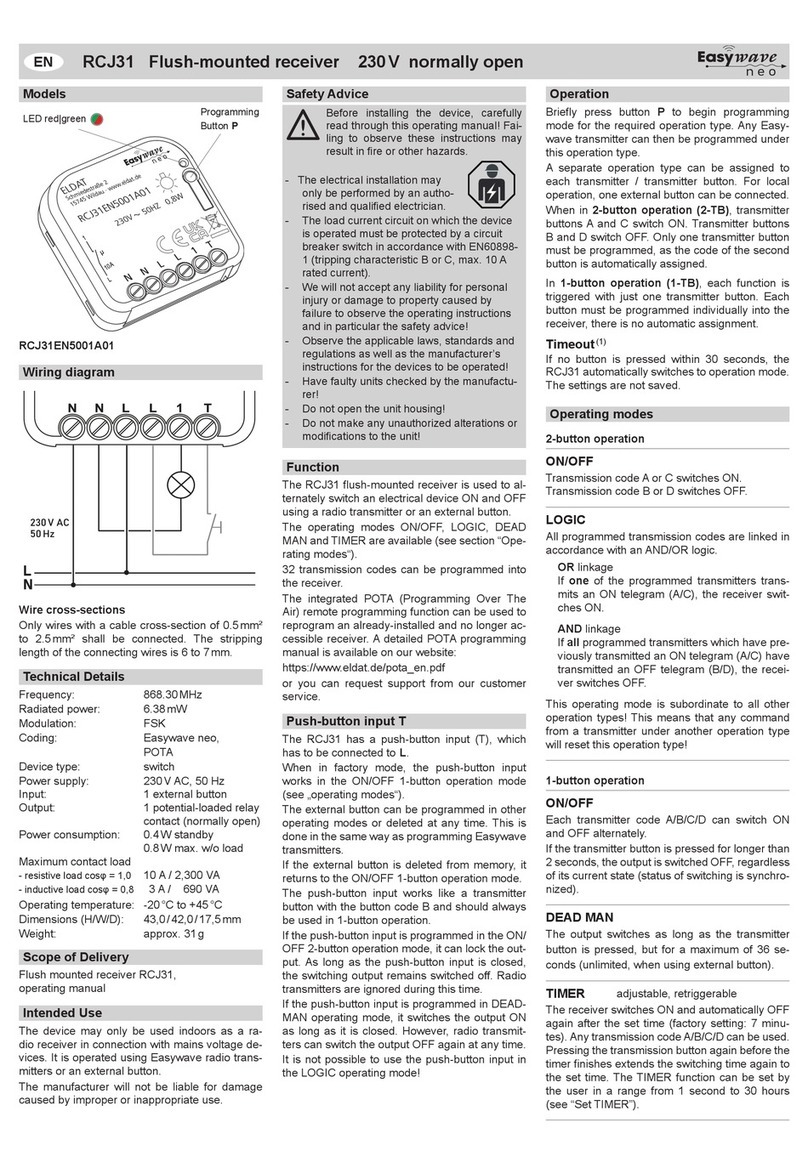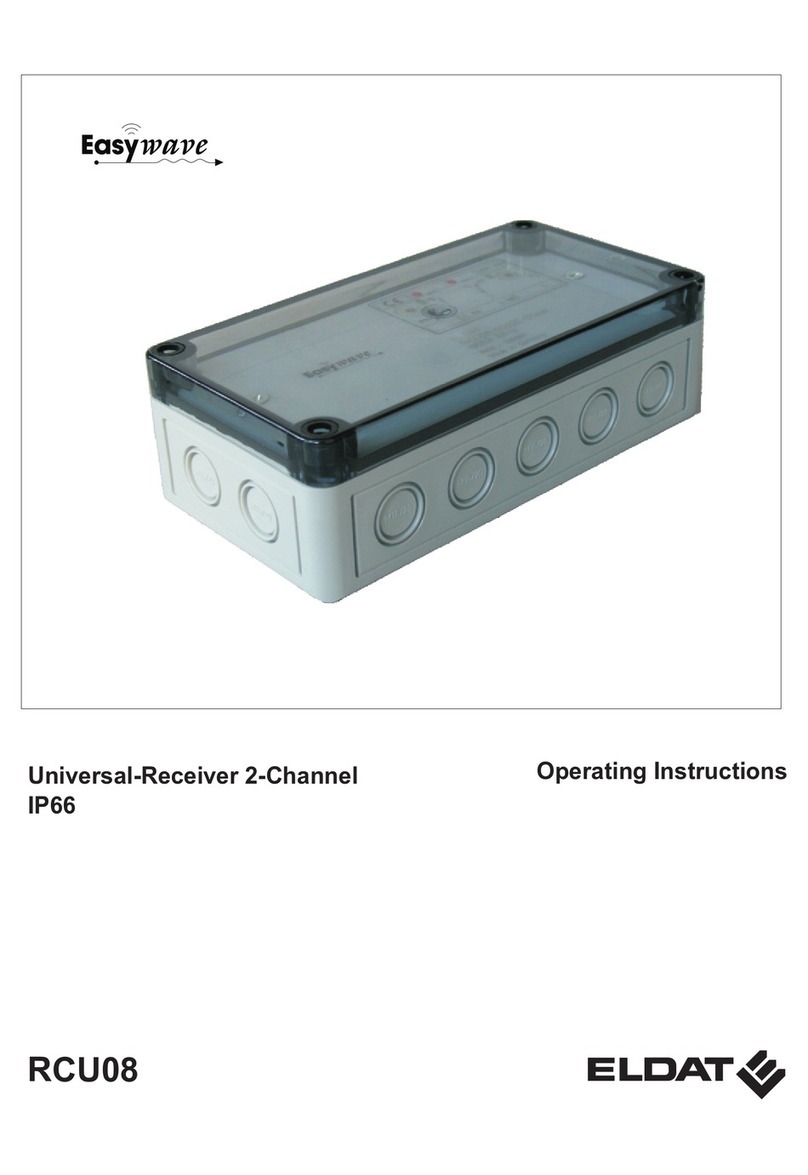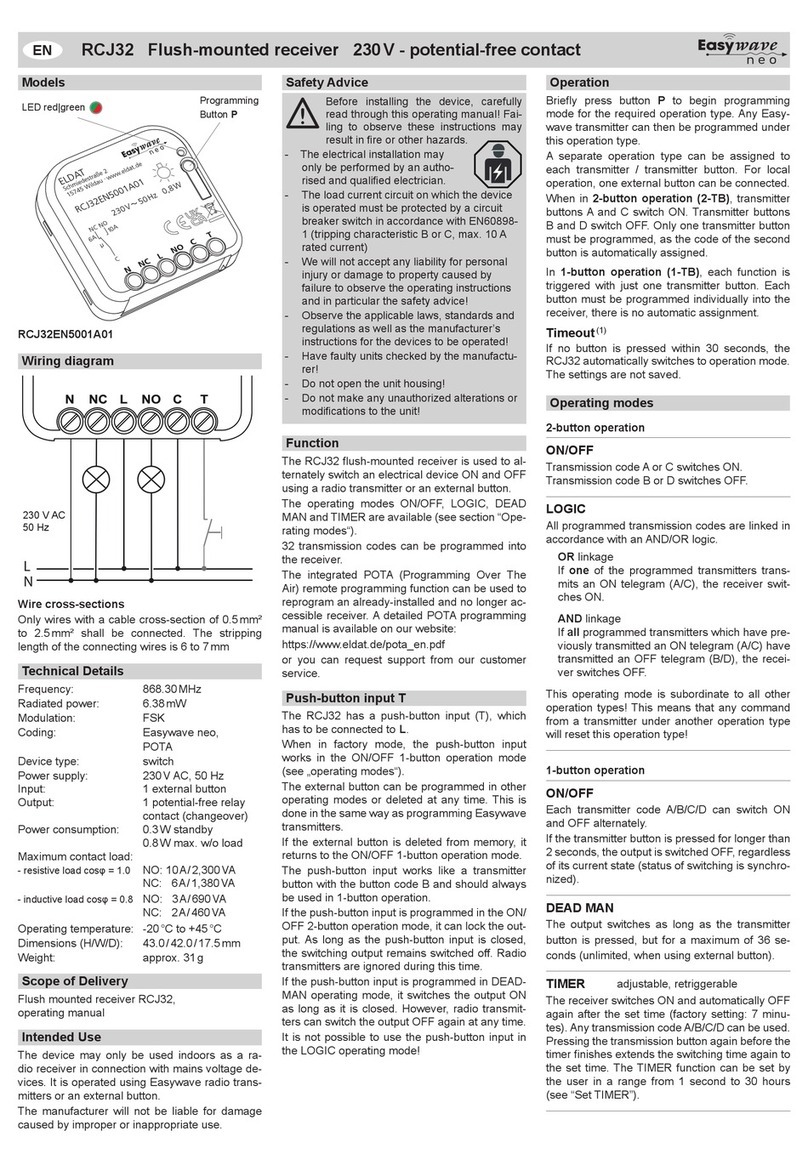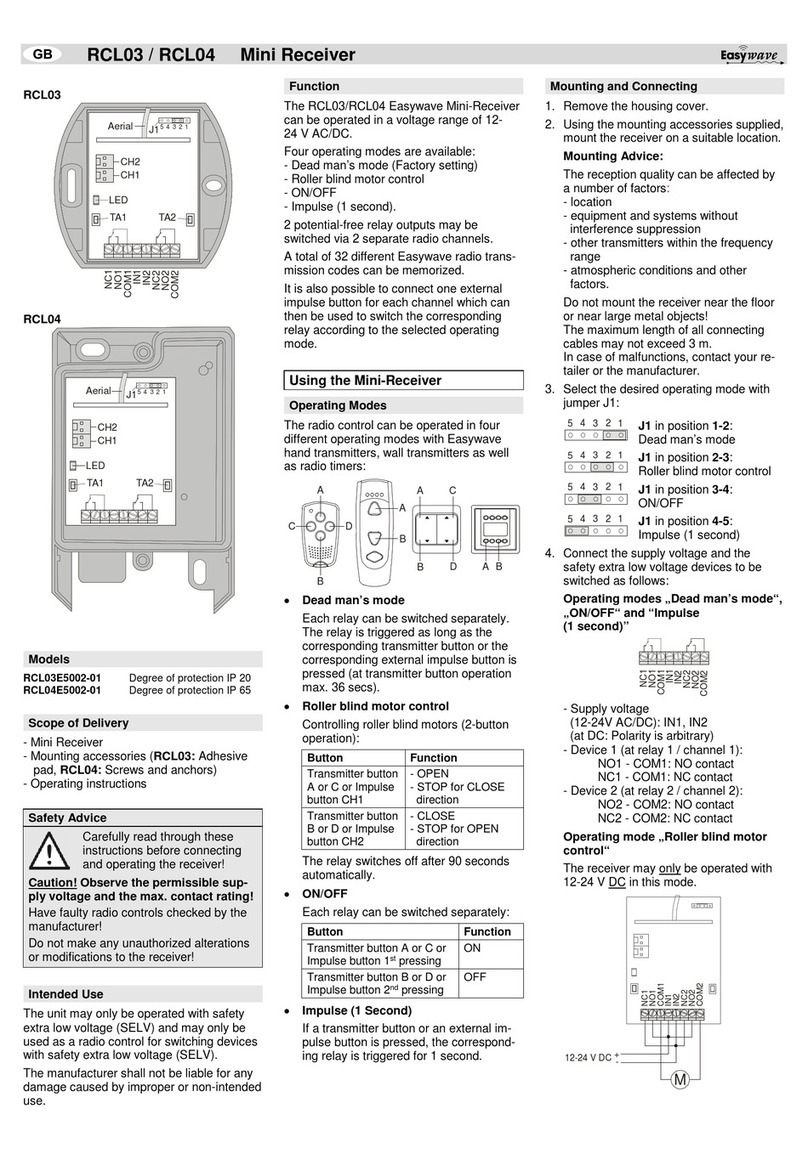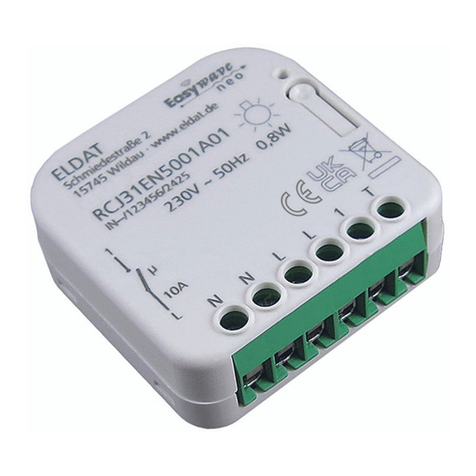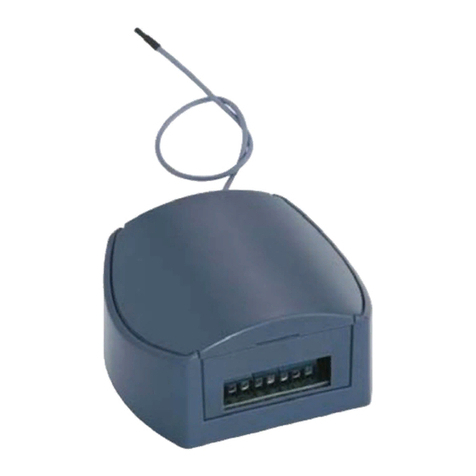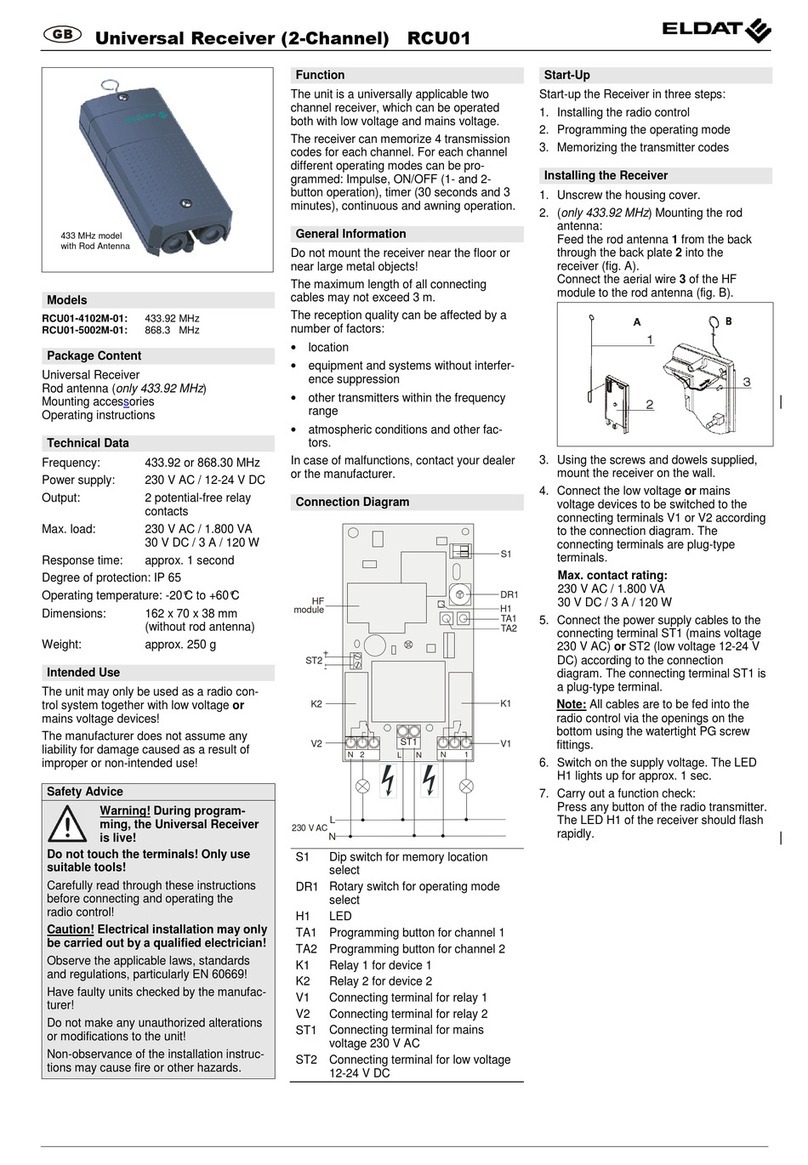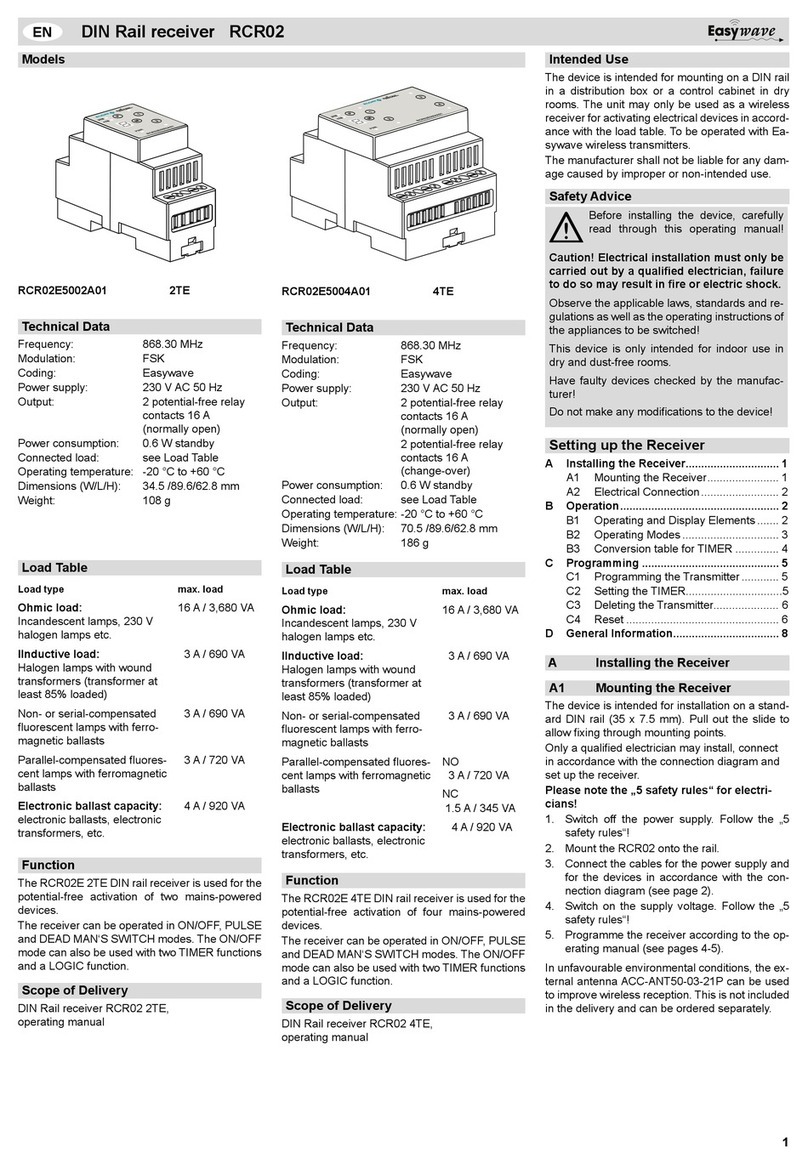
69171 0608 GB
Programming the Operating Mode
Warning! During program-
ming, the Universal Receiver
is live!
Programming may only be carried out
by a qualified electrician!
Do not touch the terminals!
Only use suitable tools!
Note: You can program a different operat-
ing mode for each channel.
1. Select the operating mode via rotary
switch DR1 according to the following
table.
2. Press and hold the programming button
for the desired channel (TA1, TA2, TA3
or TA4), until the LED H1 lights up for
approx. 1 second.
DR1 Operating Mode
0 Impulse
Relay operates for approx. 1 sec.
1 On/Off (1-Button Operation)
1
st
transmission: Switching on
2
nd
transmission: Switching off
2 Timer 30 Seconds
After transmission, the device is
switched on for 30 seconds. If a
new signal is transmitted within this
30 s period, the 30 s timer is re-
started.
3 Timer 3 Minutes
as for setting 2, but with a period of
3 minutes
4 Memorizing Transmission Codes
5 Deleting Transmission Codes
6 Continuous Operation
Relay operates as long as the
transmitter button is pressed.
7 Awning Operation
1
st
transmission: Channel 1 or 3
switched on for max. 2 minutes
2
nd
transmission: Channel 1or 3
switched off
3
rd
transmission: Channel 2 or 4
switched on for max. 2 minutes
4
th
transmission: Channel 2 or 4
switched off
8 4-channel controlling
All 4 channels are jointly controlled.
(only together with ELDAT data
radio transmitters)
9 On/Off (2-Button Operation)
Transmitter button 1: Switching on
Transmitter button 2: Switching off
Note: On the operating mode 7 („Awning
Operation“) two channels (1 and 2 or 3 and
4) interact simultaneously. Only one of the
programming buttons (TA1 or TA 2 and TA3
or TA4) has to be pressed in order to pro-
gram the operating mode.
Memorizing the Transmission Codes
You can memorize 4 different transmission-
codes for each channel.
The memory locations for the
transmission codes can be
selected via dip switch S1.
1. Select a memory location via dip switch
S1.
a) Operating Modes 0 to 3 and 6 to 8
1 2
Transmitter 1: OFF OFF
Transmitter 2: ON OFF
Transmitter 3: OFF ON
Transmitter 4: ON ON
b) Operating Mode 9
Transmitter
Button Function 1 2
Button 1: Off OFF
OFF
Button 2: On ON OFF
Button 3 or
Transmitter 2/
Button 1:
Off
OFF
ON
Button 4 or
Transmitter 2/
Button 2:
On
ON
ON
2. Turn rotary switch DR1 to position 4
(„Memorizing Transmission Codes“).
3. Press and hold the programming button
for the desired channel (TA1,TA2, TA3
or TA4) until the LED H1 of the Univer-
sal Receiver flashes.
4. Within the next 10 s press the transmit-
ter button which is supposed to control
this channel. After memorizing the
transmission code, the LED H1 of the
Universal Receiver lights up constantly
for approx. 2 s and then turns off. Re-
lease the transmitter button.
5. Repeat steps 1 to 4 for the other trans-
mitters or transmitter buttons.
6. Screw the housing cover back on.
Note: If a new transmission code is memo-
rized on a memory location, the old code
memorized on that location is deleted.
Deleting the Transmission Codes
1. Select the memory location to be de-
leted via dip switch S1.
2. Turn rotary switch DR1 to position 5
(„Deleting Transmission Codes“).
3. Press and hold the programming button
for the desired channel (TA 1,TA2, TA3
or TA4) until the LED H1 of the Univer-
sal Receiver lights up. The transmission
code on the selected memory location is
deleted.
Cleaning the Universal Receiver
Wipe the housing carefully with a damp lint
free cloth.
Caution: Do not use solvent-based clean-
ing agents. These can damage your health
and destroy the surface of the housing.
Disposal
Waste electrical products may not be
disposed of with household waste!
Dispose of the waste product via a
collection point for electronic scrap
or via your specialist dealer.
Put the packaging material into the
recycling bins for cardboard, paper
and plastics.
Warranty
Within the statutory warranty period we
undertake to rectify free of charge by repair
or replacement any product defects arising
from material or production faults.
Any unauthorized tampering with, or
modifications to, the product shall render
this warranty null and void.
Conformity
This product conforms to the basic
requirements of the R&TTE
Directive 1999/5/EC.
The Declaration of Conformity can be found
on the Internet at: www.eldat.de.
Customer Service
If, despite correct handling, faults or mal-
functions occur or if the product was
damaged, please contact the company at
the address below:
ELDAT GmbH
Im Gewerbepark 14
15711 Zeesen/Germany
Phone: + 49 (0) 33 75 / 90 37-310
Telefax: + 49 (0) 33 75 / 90 37-90
Internet: www.eldat.de
